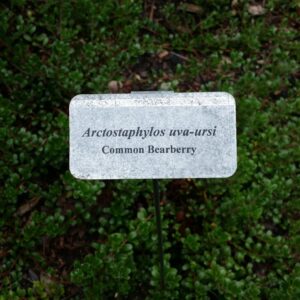Showing the single result
Bearberry Shrubs Wholesale
The bearberry shrub is filled with green teardrop-shaped leaves. In the spring, don’t be surprised to see a small number of bell-shaped white or light pink flowers. The bearberry shrub will also grow groups of quarter-inch cherry red berries that will last from fall until the next spring. Your bearberry shrub will grow six to 12 inches tall and can grow three to 15 feet wide.
Growing Tips for Bearberry Shrubs
The bearberry shrub is unique because it thrives on soil poor in nutrients and sandy soil. However, the bearberry plant prefers well-drained sandy or rocky soil. Although this plant can survive in poor soil conditions, it’s picky about the soil pH. To grow, it needs acidic soil with a pH between 4.5 and 5.5.
For lighting, plant it in full sun or partial shade. Also, make sure it’s planted in a spot where it will have plenty of space to spread. You can typically expect the plant to grow slowly at first. However, it will eventually begin to grow rapidly once it’s established to create mats. No pruning is necessary during the growing process.
Can Your Propagate Bearberry Shrubs?
If you desire, you can propagate the bearberry shrub. Propagating will help you create more plants quickly. Start your new plants by clipping the stems and dipping them in a rooting hormone powder. Then, you can plant them in moist sand to encourage root growth.
Another propagating option is to grow bearberries by collecting and replanting the seeds. The best way to see results is by taking the seeds and storing them in the refrigerator for about three months before replanting them.
Where Can You Find a Bearberry Shrub?
Typically found in the northern half of the United States, the bearberry plant can be found in a few different environments. The bearberry shrub serves a dual purpose when planted. They are a beautification plant and a stabilizer, specifically when planted in a sandy area.
The bearberry shrub can grow in a few different environments, including various elevations from sea level to sub-alpine. Some areas you may come across the bearberry shrub are in sandy and rocky areas, including shorelines, slopes, hilltops, and woodland areas.
How the Bearberry Plant Helps our Ecosystem
This plant is great for animals like butterflies, caterpillars, and hummingbirds because it provides them with nectar. You will also find mammals like deer, elk, bighorn sheep, and moose, snacking on the leathery green leaves. The fruit found on the bearberry shrub is often eaten by birds such as thrushes, wrens, robins, and waxwings. However, other animals will take advantage of the fruit’s availability during the winter and use it as a winter food source.
Designing Tips for Bearberry
The bearberry plant is considered a good ground cover because it grows low to the ground, spreading widely. With its evergreen leaves and red berries that last until spring, the bearberry shrub provides winter interest.
Since the plant is salt tolerant, it can be used in areas near the sea and in colder urban areas where road salt may be used.
Types of Bearberry Plants
There are three types of species of the bearberry plant:
Alpine Bearberry
The alpine bearberry is also often referred to as the Arctous alpine. This form of the shrub is usually less than 6 inches high, and it has a woody stem with straggling branches. It’s unique because the dead leaves will hang onto the stems for several years. Instead of red berries, you’ll notice that they tend to be a darker purple to black. You will typically find this shrub in areas like Russia, Canada, Alaska, Greenlands, Asia, British Columbia, and Maine.
Red Bearberry
Often referred to as the Arctostaphylos ruby, the red bearberry shrub will grow about 4 to 12 inches high. This shrub filled with red berries is most commonly found in Sichuan, China, Siberia, Alaska, northern Canada, and northern Quebec.
Common Bearberry
The common bearberry, also known as Arctostaphylos uva-ursi, will grow white or pinkish flowers with its long flexible branches. These flowers will eventually form into small hanging clusters and appear starting around May-June. Instead of losing its leaves, the dark-green leaves will stay green throughout the year.
Wholesale Bearberry Shrubs
If you’re looking for bearberry shrubs for sale in Michigan, Cold Stream Farm is your place to go! We are a retail bare root tree and shrub nursery located in Michigan. Take a look at our online selection of bayberry shrubs, and contact us today if you have any further questions!


